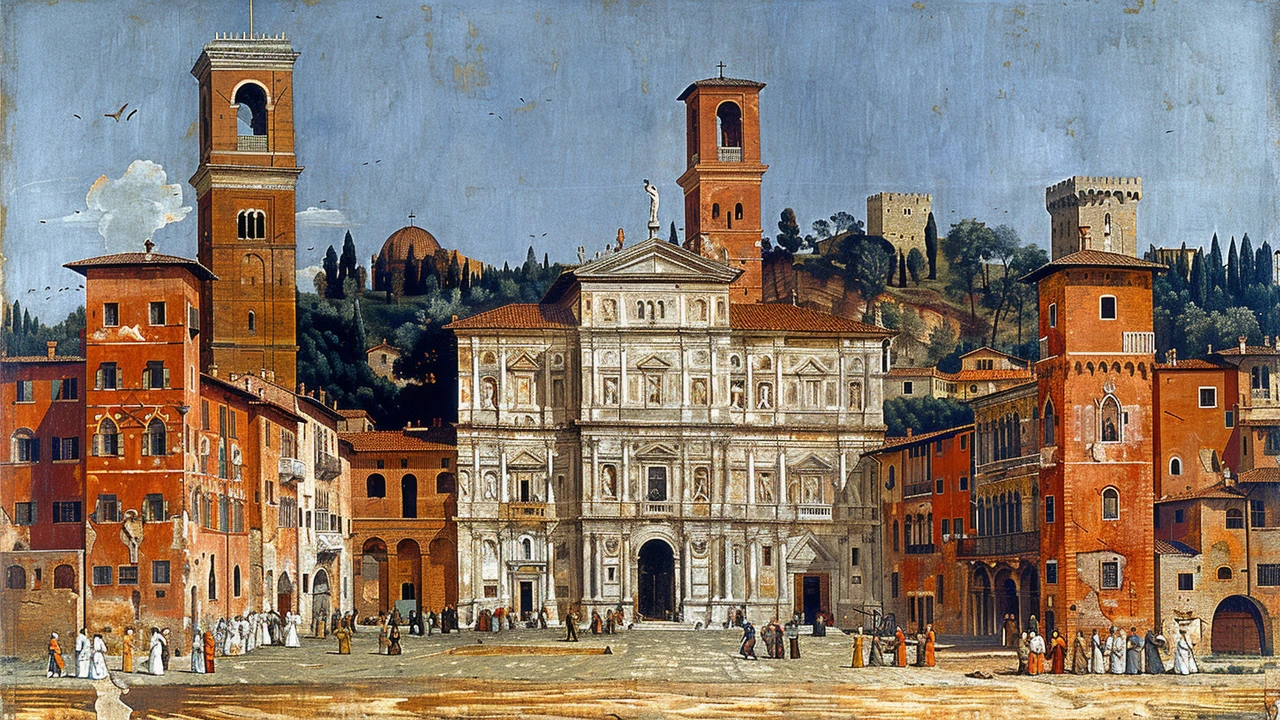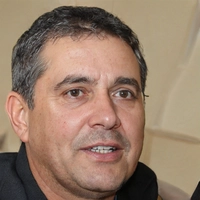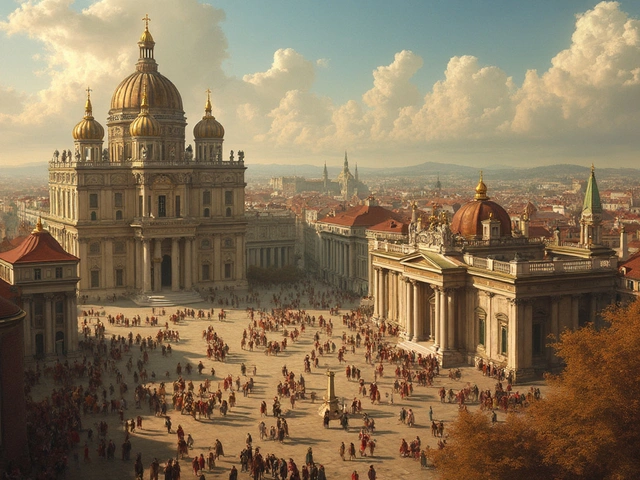The Renaissance, a beacon of cultural revival and innovation, transformed Europe from the 14th to the 17th century. This period, often referred to as a bridge between the Middle Ages and modern history, saw remarkable advancements in art, science, and society. It blended a renewed interest in classical antiquity with fresh ideas, giving birth to extraordinary achievements that continue to influence our world today.
- Origins of the Renaissance
- Art and Architecture
- Scientific Advancements
- Influential Figures
- Cultural Impact
- Legacy and Modern Connections
Origins of the Renaissance
The Renaissance, often hailed as a golden age of art and culture, sprang to life in the bustling cities of Italy during the 14th century. Its roots can be traced back to the dynamic city of Florence. The prosperity of this city-state played a pivotal role in nurturing the ideas of the Renaissance. A thriving center of commerce and banking, Florence became a hub where economic power met artistic and intellectual ambition.
Wealthy patrons, most notably the Medici family, supported artists and thinkers, allowing them to pursue their work without financial constraints. This patronage was vital and cultivated an environment where creativity could flourish. Giovanni di Bicci de' Medici, often considered the founder of Medici fortunes, laid the groundwork, but it was his offspring, notably Cosimo de' Medici, who turned Florence into the cradle of the Renaissance. They funded not just artists, but also the construction of libraries and the translation of classical texts, bringing the knowledge of ancient Greece and Rome back into the discussion.
Another vital influence was the fall of Constantinople in 1453, which led to an influx of Greek scholars into Italy. These scholars brought with them precious manuscripts and their profound knowledge of ancient Greek and Roman texts. The rediscovery of these classical works inspired the humanist movement, which emphasized the value of human beings, the study of classical antiquity, and a shift away from the predominantly religious focus of the Middle Ages.
The Renaissance's origins are as complex as they are fascinating. It was not just an Italian phenomenon but a result of a multitude of factors, including the rise of secularism and individualism. The Black Death, which decimated Europe in the mid-14th century, also played a significant role. This pandemic sparked societal changes by creating a demand for labor and new modes of thinking about life and death. People began to question the established norms and seek new ways to understand the world.
Furthermore, the invention of the printing press by Johannes Gutenberg in the mid-15th century made knowledge more accessible. Books, once laboriously hand-copied and expensive, could now be mass-produced. This innovation revolutionized the spread of ideas and allowed Renaissance ideas to permeate different strata of society far more efficiently than ever before. A notable quote from the period states,
"Printing is the ultimate gift of God and the greatest one."
While Florence is often considered the heart of the Renaissance, other Italian cities played crucial roles in its development. Venice, with its strategic position as a trade nexus, also contributed significantly. The city’s wealth enabled extensive patronage of the arts, and its cosmopolitan nature meant that ideas flowed freely from East to West. Similarly, Rome, recovering from its medieval decline, became a center for Renaissance arts, especially under the patronage of the popes, who commissioned works that embellished the Vatican and the city at large.
Thus, the origins of the Renaissance are deeply rooted in a mix of socio-economic factors, the revival of classical knowledge, the patronage of powerful families, and technological innovations. The transformations that began in Italy eventually spread throughout Europe, revolutionizing various aspects of life and sowing the seeds of the modern world.
Art and Architecture
The Renaissance era is perhaps most famous for its incredible transformations in art and architecture. Think of names like Leonardo da Vinci, Michelangelo, and Raphael; their artworks are still celebrated for their beauty and creativity. One of the defining features of Renaissance art is its focus on realism and human emotion. Artists developed new techniques such as linear perspective, which creates the illusion of depth on a flat surface, making paintings appear more three-dimensional.
Michelangelo's masterpiece, the Sistine Chapel ceiling, is a perfect example of this effort to capture the human form in all its nuanced beauty. The scenes are vibrantly detailed, and each figure is carefully crafted, showing a deep understanding of human anatomy. Leonardo da Vinci's 'Mona Lisa,' with her enigmatic smile, remains a timeless piece of art that captivates millions to this day. The use of light and shadow, known as chiaroscuro, is another technique that became prevalent during this period, adding depth and drama to the subjects depicted.
Architecture, too, saw significant changes. The Renaissance period marked a return to the classical ideals of ancient Rome and Greece. This was characterized by symmetry, proportion, and geometry. Filippo Brunelleschi is often credited with pioneering Renaissance architecture. His work on the Florence Cathedral's dome broke new ground in engineering and aesthetics. This structure, with its perfect harmony and balance, is considered a pivotal moment in architectural history.
"Renaissance architecture was a conscious attempt to revive and adapt the forms and ornament of ancient classical architecture" - Banister Fletcher
Another iconic structure is the St. Peter's Basilica in Vatican City, which involved the collaborative efforts of several renowned architects, including Michelangelo. The Renaissance style spread beyond Italy, influencing structures across Europe, from palaces and churches to public buildings. These edifices were not only functional but also displayed artistic grandeur, reflecting the wealth and power of their patrons.
We see the influence of Renaissance art and architecture in modern times too. From city skylines to contemporary art forms, the legacy of this period highlights the importance of creativity and innovation. Museums around the world host Renaissance art collections, offering a glimpse into a time when creativity and human potential were celebrated like never before.
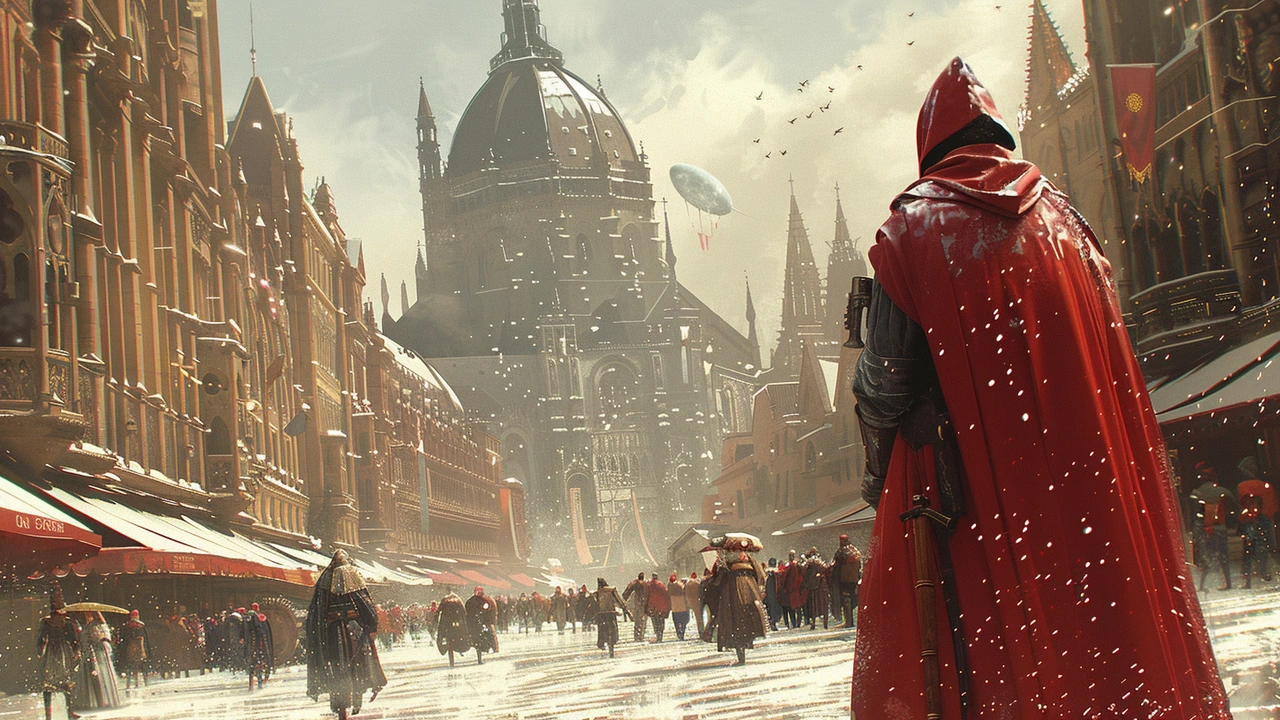
Scientific Advancements
The Renaissance was a remarkable period for scientific advancements. During this era, curiosity and innovation thrived, leading to many groundbreaking discoveries. An environment that encouraged inquiry and empirical evidence replaced the old reliance on classical texts and religious doctrine. This shift laid the foundation for the scientific method and modern science as we know it.
One of the most significant figures of this period was Leonardo da Vinci. Known primarily for his art, Leonardo was also a pioneering scientist. His notebooks are filled with anatomical drawings and studies on various subjects, from flight to hydraulics. His meticulous attention to detail and relentless curiosity made him one of history's greatest polymaths. Leonardo's contributions were vast, even if many of his ideas were not realized in his lifetime.
Nicolaus Copernicus was another giant of Renaissance science. In 1543, he published De revolutionibus orbium coelestium, a work that posited the heliocentric model of the universe. This concept was revolutionary, contradicting the long-held geocentric model endorsed by the Church. Copernicus placed the Sun, not the Earth, at the center of the universe, fundamentally altering our understanding of our place in the cosmos.
The scientific revolution continued with figures like Galileo Galilei. Galileo's improvements to the telescope allowed him to make groundbreaking astronomical observations, such as the moons of Jupiter and the phases of Venus. These discoveries provided substantial evidence for the Copernican system. Galileo's advocacy for heliocentrism led to conflicts with the Catholic Church, highlighting the tension between science and religion during this period. He famously said, "E pur si muove," or "And yet it moves," asserting the truth of heliocentric theory despite his forced recantation.
Andreas Vesalius made significant contributions to anatomy during the Renaissance. His work, De humani corporis fabrica (On the Fabric of the Human Body) published in 1543, corrected many of the misconceptions about human anatomy prevalent since the time of Galen. Vesalius's detailed and accurate drawings, based on dissections, laid the groundwork for modern biology and medicine. His emphasis on direct observation and hands-on study was a departure from the passive acceptance of ancient texts.
Another notable figure, Johannes Kepler, built on the work of his predecessors to further our understanding of planetary motion. Kepler's laws of planetary motion described the orbits of planets with unprecedented accuracy. By showing that planets travel in elliptical orbits, Kepler resolved many inconsistencies in the Copernican model and paved the way for Isaac Newton's laws of motion and universal gravitation.
This period also saw significant advancements in other scientific disciplines. William Harvey's discovery of the circulation of blood and Francis Bacon's development of the empirical method were vital milestones. Bacon's vision of science as a process driven by experimentation and observation rather than speculation became a cornerstone of modern scientific practice.
The Renaissance's emphasis on observation, experimentation, and the questioning of old ideas set the stage for the Enlightenment and the scientific revolutions that followed. By valuing empirical evidence and challenging established doctrines, the thinkers of the Renaissance paved the way for the progress that defines our current understanding of the world.
Influential Figures
The Renaissance boasted a number of influential figures whose contributions continue to resonate today. One of the most iconic individuals of this era is Leonardo da Vinci. Known for his masterpieces like the Mona Lisa and The Last Supper, Leonardo was not just an artist. He was a visionary whose notebooks were brimming with sketches of futuristic inventions, anatomical studies, and scientific theories. With his insatiable curiosity and diverse talents, da Vinci epitomized the Renaissance Man, blending art and science seamlessly.
Michelangelo Buonarroti, another towering figure, left a profound impact on art and architecture. His work on the Sistine Chapel ceiling remains a testament to his extraordinary skill and dedication. The creation of Adam, particularly, captures the divine touch between God and humanity. Moreover, Michelangelo's David, a marble sculpture, stands as an enduring symbol of strength and beauty. He once said, "I saw the angel in the marble and carved until I set him free."
Nicolaus Copernicus revolutionized our understanding of the cosmos by proposing a heliocentric model of the solar system. His book,
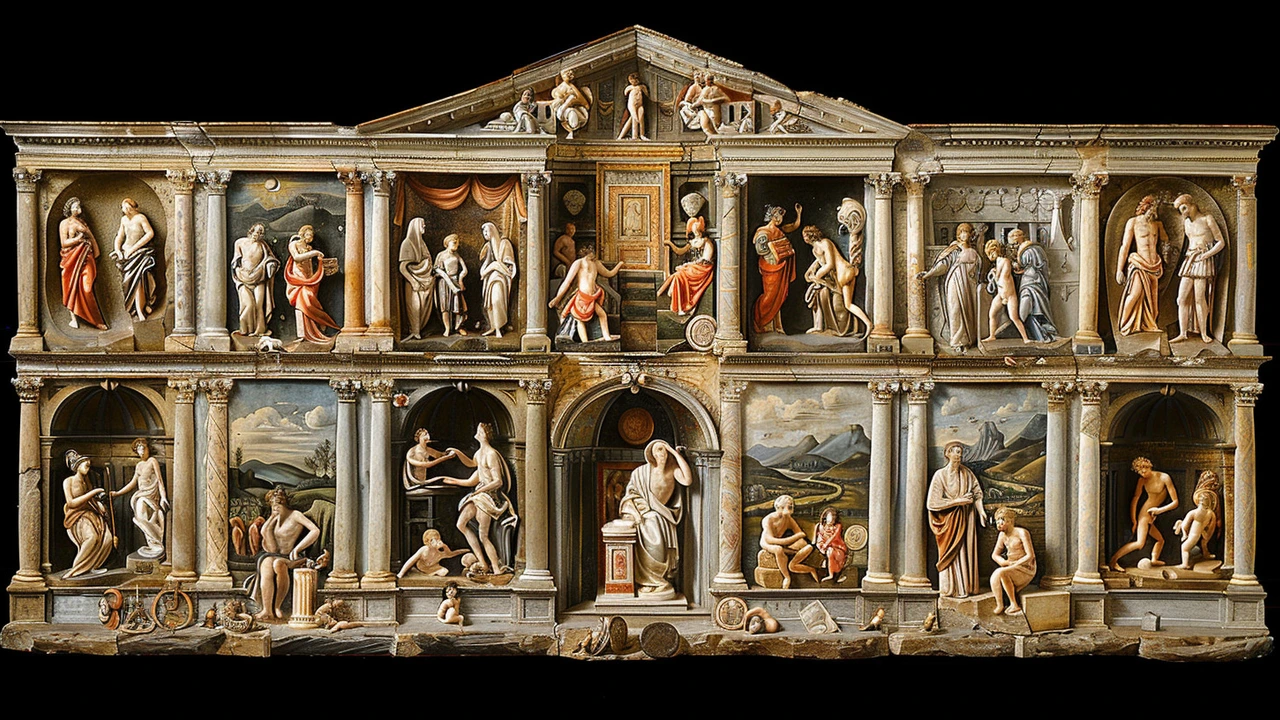
Cultural Impact
During the Renaissance, cultural transformation boomed across Europe, influencing art, literature, and daily life. One significant aspect was the revival of Classical Greek and Roman ideals, which had a profound impact on education and intellectual pursuits. Thinkers began to place a higher value on humanism, emphasizing human potential and achievements over religious doctrine. This shift encouraged individuals to explore various fields, leading to groundbreaking discoveries and artistic masterpieces.
Art flourished with exceptional contributions from artists like Leonardo da Vinci, Michelangelo, and Raphael. Their work showcased a deep understanding of the human form and emotion, pushing the boundaries of what was considered possible in art. Painting and sculpture, marked by meticulous attention to detail and perspective, became means for artists to express complex ideas and emotions, often inspired by the renewed interest in classical antiquity.
The Renaissance also saw an explosion of literary output. Great authors like Dante, Petrarch, and Boccaccio, writing in vernacular languages rather than Latin, made literature accessible to a wider audience. This literature was not just about storytelling; it explored human nature, politics, and philosophy. This era produced some of the most enduring works, such as Dante’s “Divine Comedy” and Machiavelli’s “The Prince.”
Education and Society
The shift towards humanist values revolutionized education. Universities and schools began to adopt more secular curriculums, focusing on the classics as well as the sciences. The invention of the printing press by Johannes Gutenberg in the mid-15th century played a crucial role, making books more affordable and widely available. This accessibility of knowledge ignited a thirst for learning among the populace.
Everyday life also changed dramatically. There was an increased emphasis on individual achievement and self-expression. People began to question authority and seek personal happiness and fulfillment, setting the stage for modern Western thought. Moreover, the rise of merchant classes and improved economies allowed more people to engage in the arts as patrons, artists, or enthusiasts.
"The Renaissance gave birth to the modern man." – Jacob Burckhardt
These cultural shifts not only altered the way people lived but also set the foundation for future societal changes. The Renaissance's emphasis on human potential and achievement spurred the Reformation and the Age of Enlightenment, laying the groundwork for the modern scientific and cultural landscape.
The Renaissance's cultural impact, with its emphasis on rekindling ancient wisdom and exploring human potential, continues to resonate in today’s society. Whether it’s the appreciation for art, the quest for knowledge, or the pursuit of self-improvement, the legacy of this transformative period is still evident in our lives.
Legacy and Modern Connections
The Renaissance left an indelible mark on the world, shaping the course of modern culture, thought, and innovation. The influence of this vibrant period is evident in our art, science, literature, and philosophy. As we delve into the legacy of the Renaissance, it is crucial to examine how its impact continues to resonate today.
The artistic techniques pioneered during the Renaissance revolutionized the art world. Techniques like perspective, chiaroscuro, and realistic human anatomy became foundational. Renaissance masterpieces by artists such as Leonardo da Vinci, Michelangelo, and Raphael set new standards. Today, art students worldwide study these works, aspiring to understand and replicate their timeless brilliance.
Scientific advancement during the Renaissance laid the groundwork for modern science. Figures like Galileo Galilei and Nicolaus Copernicus challenged traditional beliefs, leading to critical discoveries. Their emphasis on observation and empirical evidence helped develop the scientific method, which remains central to scientific inquiry today. This era's contributions are taught in classrooms globally, emphasizing the importance of critical thinking and research.
In literature, the Renaissance birthed works that shaped modern storytelling. William Shakespeare, for instance, crafted plays and sonnets that continue to be performed and studied. His exploration of human nature and clever use of language remain unparalleled. Through his works, Shakespeare influenced countless writers, ensuring his legacy endures.
The Renaissance's philosophical ideas also significantly impacted modern thought. Humanism, with its focus on individual potential and secular concerns, emerged as a dominant philosophy. This shift helped promote the idea of democracy and individual rights, which are cornerstones of many societies today. The writings of thinkers such as Erasmus and Machiavelli are still referenced in contemporary debates about politics and morality.
The architectural marvels of the Renaissance, characterized by symmetry, proportion, and geometry, continue to inspire modern design. Structures like St. Peter's Basilica and Florence Cathedral not only exhibit exquisite craftsmanship but also represent the era's commitment to combining beauty with functionality. Modern architects draw from these principles, creating buildings that marry aesthetic appeal with practicality.
"The Renaissance is the root and the foundation of modern Western civilization." - Steven Pinker
The Renaissance's emphasis on education and knowledge dissemination led to the development of universities and libraries. The Gutenberg printing press, invented during this time, revolutionized the way information was shared. Today, the press's legacy is evident in our access to vast amounts of information rapidly, fostering an informed and connected global society.
The lasting impact of the Renaissance on innovation and creativity cannot be overstated. It was a time where pushing boundaries and challenging the status quo became the norm. This spirit of exploration and questioning established the foundation for modern technological advancements. Silicon Valley, for instance, embodies the innovative spirit that the Renaissance championed, driving forward new ideas and technologies that shape our daily lives.

